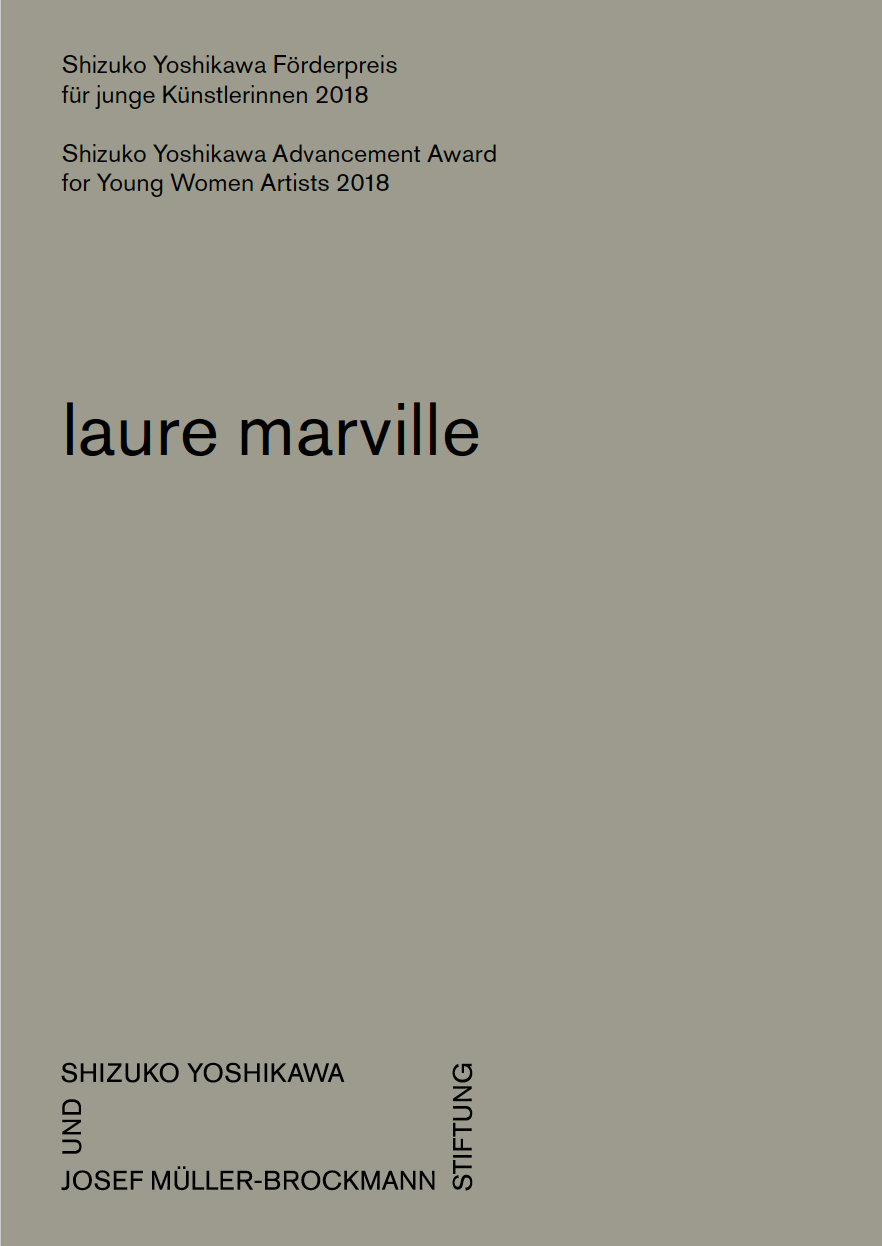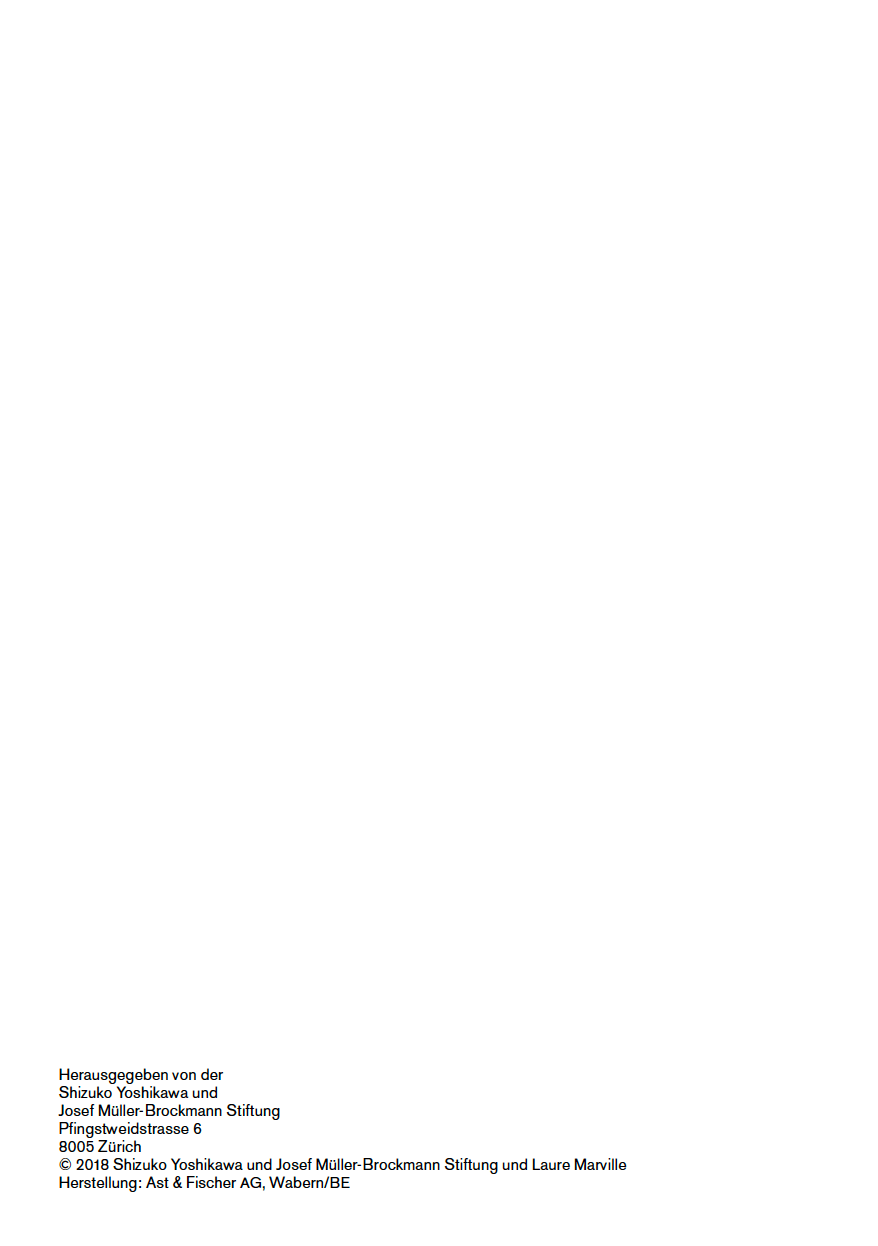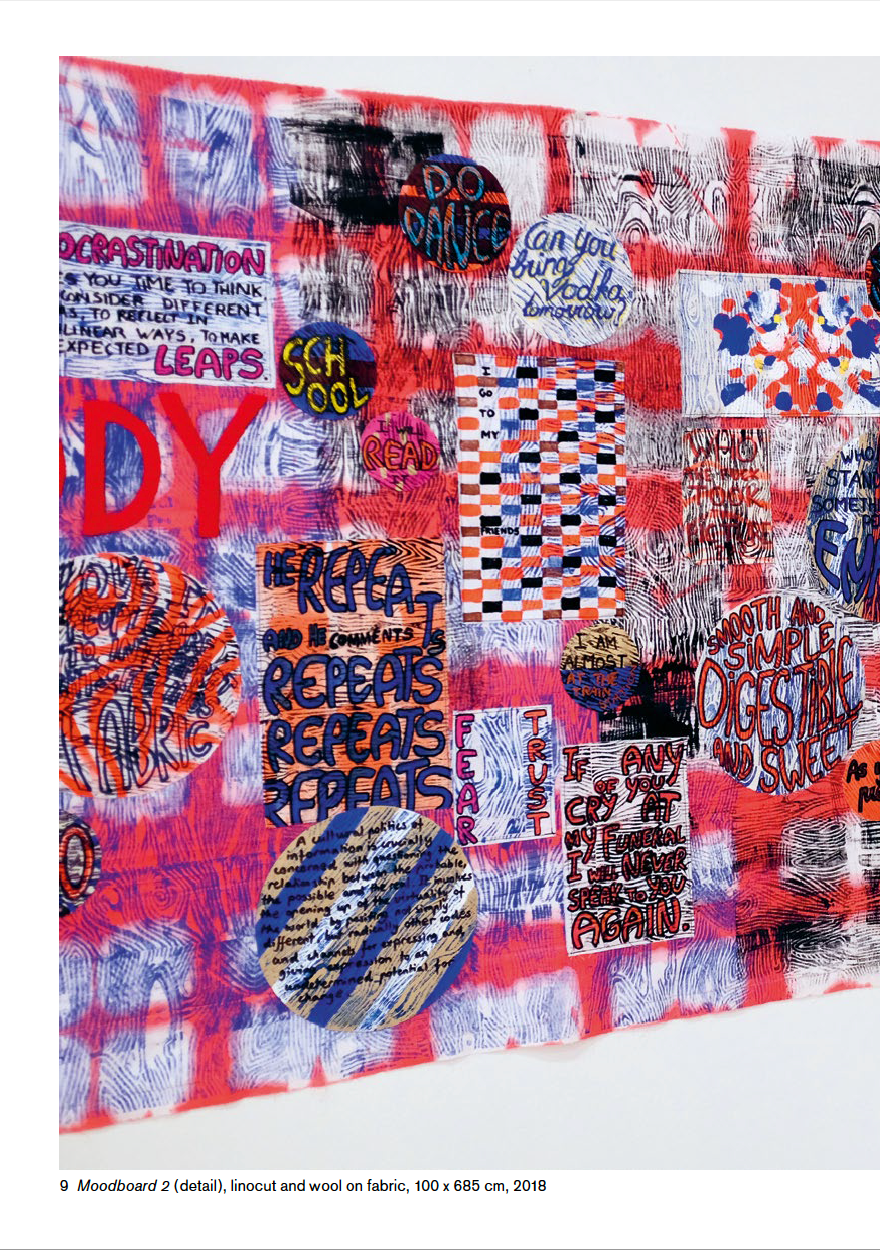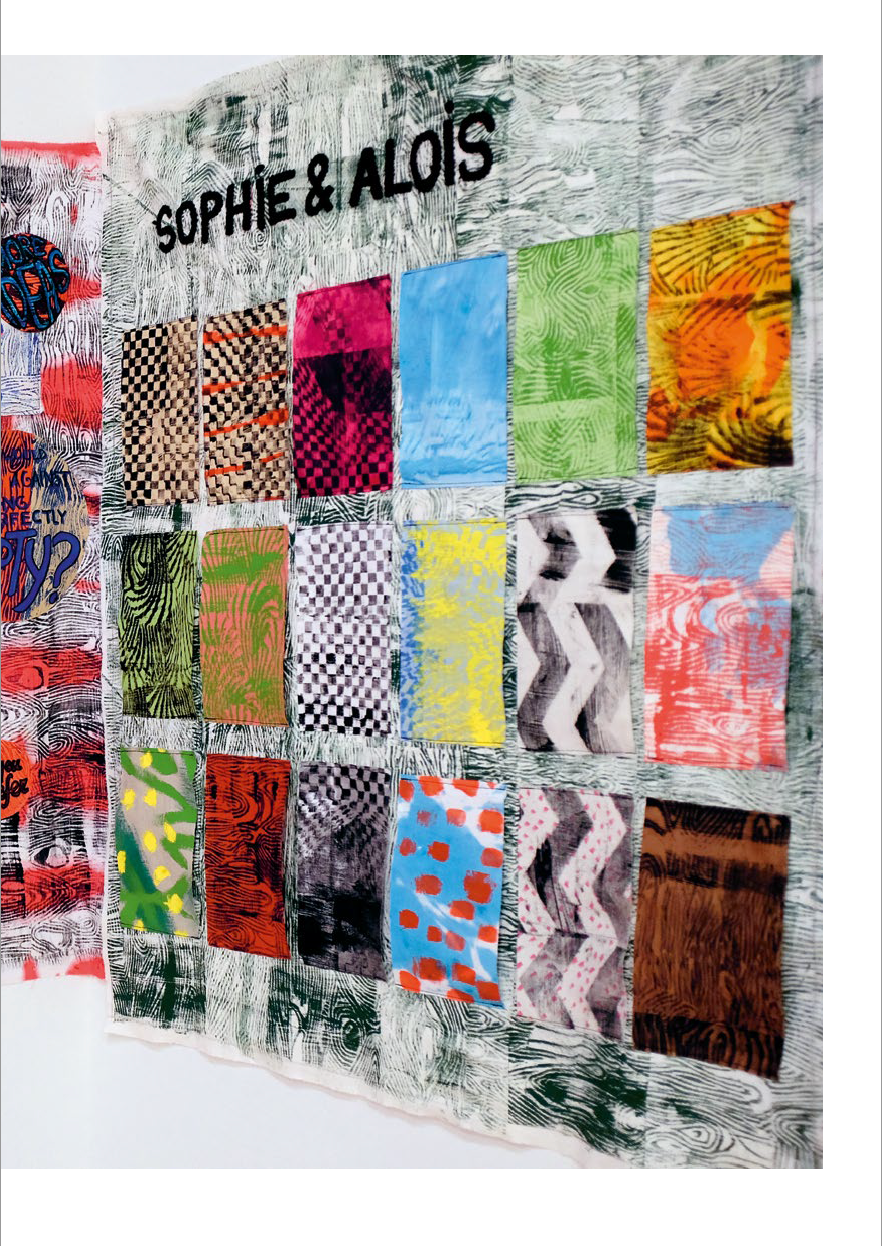LAURE MARVILLE
New publication as part of the 2018 Shizuko Yoshikawa Award:
Laure Marville is the recipient of the 2018 Shizuko Yoshikawa Award, which includes a publication.
Herausgeberin: Shizuko Yoshikawa und Josef Müller-Brockmann Stiftung
Autorin: Dominique von Burg
Herstellung: Ast & Fischer AG, Wabern/BE
Englisch / Deutsch; 28 Seiten; Preis: CHF 10
Zu bestellen unter: sonja@lars-muller.ch
Broschüre_SY-Förderpreis_20181203.indd
Marville recently returned from Moscow, where she did a three-month artist in residence program sponsored by Pro Helvetia, applying
her considerable élan to organizing an exhibition in the rooms of the Fabrika Project at Perevedenovskiy Pereulok. In the meantime, she has received the Shizuko Yoshikawa Advancement Award for Young WomenArtists.The award duly recognizes her keen awareness of materials and the fresh feel of her art. She works with great dedication and careful consideration while keeping a curious, open mind. Her impressions from Moscow have naturally affected her art. Since then, the artist has cut and carved into linoleum panels more or less de- tailed texts and quotations that she discovered on building walls in Moscow. Her employment of texts, proverbs, and parables has taken on a new dimension since Moscow, and her language has become tougher and more intense. The linoleum panels serve as her instrument, whether she integrates them into other works or layers different panels on top of each other. The text, textile, and linoleum layers are interwoven to form a rhizome-like space. Marville also drew inspiration from Russian textile producers such as the Pavlovsky Posad Shawl Manufactory and the Ivanovo Textile-Haberdashery Factory, and from the All-Russian Museum of Decorative, Applied and Folk Art. The latter has wonderful collections of textile art, which often displays floral and figurative motifs.
The artist has incorporated these floral and figurative patterns into many of her new works. Even more than in her earlier pieces, structure and chance enter into a congenial dialogue here. This may be one reason why Laure Marville’s works are so difficult to categorize. This is also due to their ambivalent materiality and market value, and the artist’s constant reuse and recycling of previous works. If, as French art critic Nicolas Bourriaud (b.1965) contends, some artists combine pluralistic styles in order to define themselves through a form of knowledge that invents ways to cut across the cultural spectrum, Laure Marville makes these very pathways visible. In the spirit of Bourriaud, who coined the term “Relational Aesthetics” (Esthétique relationnelle, Paris 1998) at the end of the 1990s to describe a new art trend in which interpersonal encounters take center stage, Marville concentrates on communication as intertextuality and the inter- play of materials in her works. In a world that has become tangled and confusing, the question of who “we” are is gaining renewed impor- tance, along with the question of the identity that constitutes this “we.” The artist finds answers to these questions in the writings of the French philosopher Edgar Morin (b.1921), who spans an arc from nature to being human and onward to ethics and politics. As a pioneer of systems theory, he pleads for a reform in our way of thinking, urging us to recognize the complexity in all areas of nature and life. As events and multidimensional, interactive objects emerge that are made up of random components, we are forced to develop a thinking strategy that does not simplify or generalize but is reflexive instead. Morin, who finds it vital to take into account heterogeneity and differing caus- alities, calls this ability complex thinking (Method, Volume 1: The Nature of Nature (1977–), Peter Lang, American University Studies Series, New York, 1992).
This complexity, which can also be found in society, is what is re- flected in Laure Marville’s works, which in formal terms follow the nonlinear structure of the internet and our associative processing of data, figures, and facts. All is a jumble. Questions of composition do not play much of a role; instead, the expression “Ce qui est tissé ensemble” points to weaving as a visual metaphor for writing. Marville weaves her oeuvre out of language, sentences, patches, embroideries, and engravings, bringing together the most disparate materials. The works delight, please, inspire, irritate, tell stories, and again and again tell of utopias in times when the utopian has long since vanished. The artist Audre Lorde (1934–1992), a US writer and activist whose influence on African American, feminist, and queer movements is still extraordinarily alive, speaks from the heart here. For an exhibition at the Fabrika Project, Marville scribbled several of Lorde’s admonitions and ideas on a wall, summing them all up in one sentence: “She said that your silence won’t protect you, that revolution is not a one-time event, that our feelings are our most genuine paths to knowledge, and that we must recognize and nurture the creative parts of each other without always understanding what will be created.”
And yet in Laure Marville’s work the utopian does not urge us towards activism but is instead integrated into a unified fabric that, together with formal combinations and motifs, has the character of a synthesis. A synthesis which, to quote Edgar Morin, “seeks to reconnect indivi- dual insights and to understand the parts with the whole and the whole with the parts, the relationship of the global to the local and the local to the global” (Method, Volume 1: The Nature of Nature).
Text: Dominique von Burg, 2018



